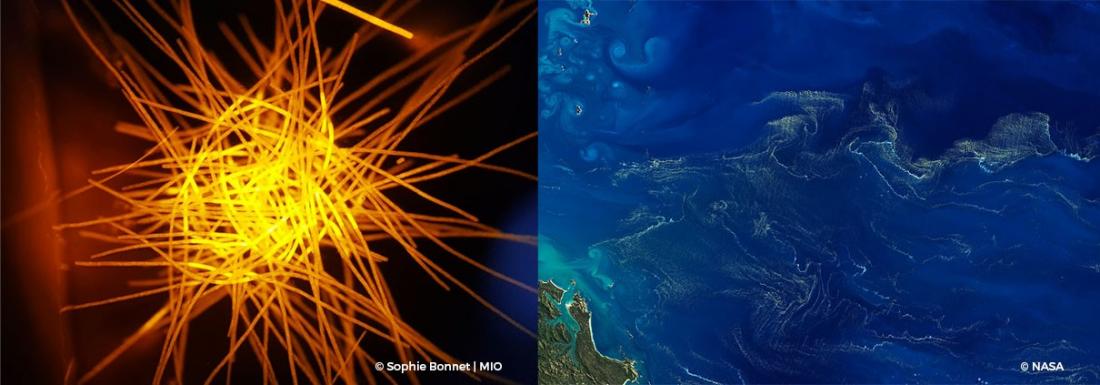A CO₂ well in the South Pacific marine desert
Six MIO colleagues (Sophie Bonnet, Elvira Pulido, Olivier Grosso, Sandra Nunige, Caroline Lory and Mercedes Camps) have just co-published an international study in the prestigious journal Science on a new mechanism for the natural iron fertilization of the ocean by hydrothermal springs. The publication is based on results from the TONGA campaign, led by Sophie Bonnet (MIO) and Cécile Guieu (LOV).
Press release
A newly identified process of natural iron fertilization in the ocean feeds regional CO₂ sinks. This is demonstrated by a study published May 25 in Science and co-authored by 25 researchers from the Tonga project led by two IRD and CNRS researchers, bringing together more than 90 scientists from 14 French laboratories based in mainland France and New Caledonia, and 6 international universities. In this article, the research team studied the shallow submarine volcanoes of the Tonga volcanic arc (South Pacific), which release hydrothermal fluids rich in iron, a micronutrient essential for life. Some of the iron emitted in these fluids reaches the lighted layer of the ocean, where photosynthesis takes place, i.e. the fixation of CO₂ by plankton microalgae. This strongly stimulates biological activity in this zone, particularly that of diazotrophs1, creating a vast bloom of around 400,000 km2, a veritable oasis of life in the middle of the South Pacific marine desert, and increased sequestration of CO2 towards the deep ocean.
To document the mechanistic link between the supply of iron by submarine volcanism and the response of the surface plankton community, the researchers combined acoustic, chemical, physical and biological observations acquired during the Tonga oceanographic expedition, carried out in 2019 aboard the L'Atalante vessel of the French Oceanographic Fleet operated by Ifremer.
In this study, scientists demonstrate that fluids emitted along Tonga's volcanic arc have a considerable impact on iron concentrations in the illuminated layer. This enrichment stimulates biological activity, leading to the formation of a vast oasis of chlorophyll-rich life, dominated by the diazotroph Trichodesmium. Compared with adjacent waters not fertilized with iron, diazotroph activity is 2 to 8 times higher and carbon sequestration fluxes in the deep ocean 2 to 3 times. These results reveal a mechanism of natural iron fertilization in the ocean by hydrothermal springs, which feeds regional atmospheric CO2 sinks.
Planktonic diazotrophs are microscopic organisms that are ubiquitous in the ocean. They play a crucial role, acting as natural fertilizers by providing newly available nitrogen to the surface ocean biosphere, an essential but scarce nutrient in most of our oceans. The western subtropical South Pacific is a hotbed of diazotroph activity, contributing an estimated 21% of the world's nitrogen through this process.
Iron input via atmospheric deposition is known to control large-scale diazotroph biogeography, but these aeolian inputs are extremely low in this remote region. This suggests the presence of other iron fertilization processes, such as the one highlighted here for the first time. Identifying these processes is of the utmost importance, as diazotrophs have recently been identified as key drivers of future CO2 fixation by the ocean in response to climate change.
INSU CNRS article
See the TONGA Mission movie


